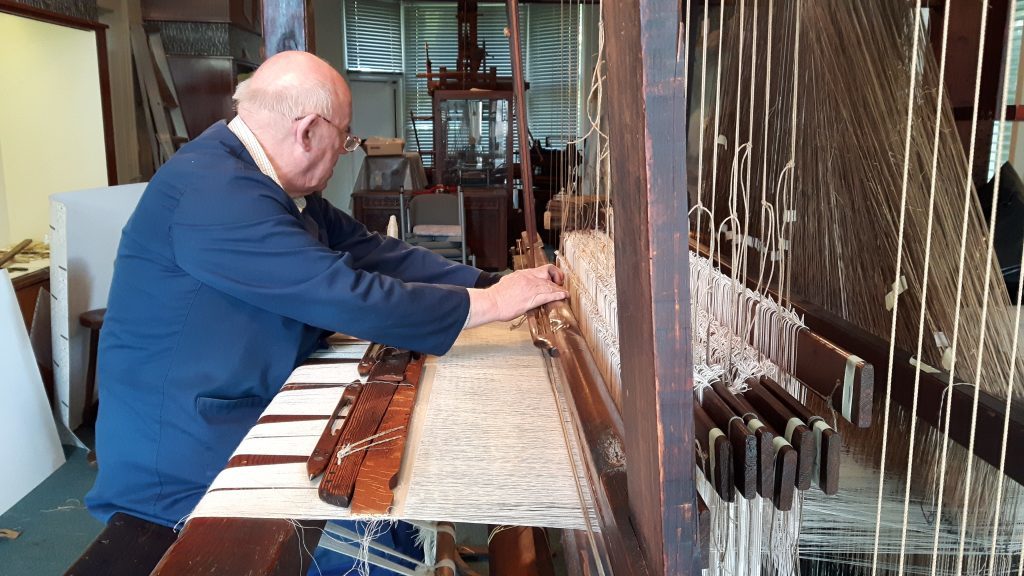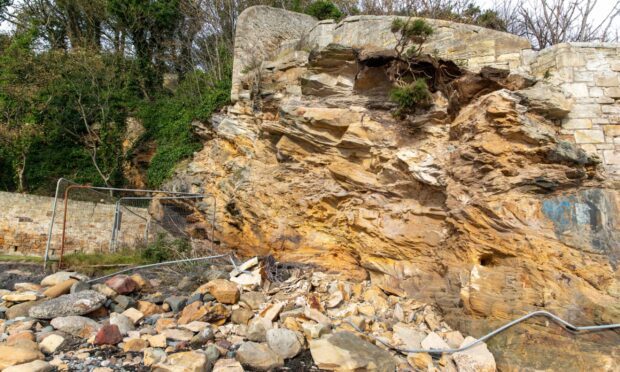A loom woven into Dunfermline’s industrial heritage has taken pride of place in the town’s new cultural hub.
The Meldrum loom will be one of the first things visitors will see as they enter the new Dunfermline Carnegie Library & Galleries when the doors are opened in three weeks.
Weaving is a huge part of Dunfermline’s heritage — in 1835 there were more than 3,500 handlooms operating in the town.
Today, the Meldrum handloom is one of only two still resident in Scotland’s ancient capital.
The handcrafted loom, on which two generations of the Meldrum family produced high quality damask linens, makes a considerable impact in the new museum.
An immersive audio visual display brings the loom to life.
Dating from the early 19th Century, the loom needed extensive restoration to return it to full working order and preserve it for future generations.
It was dismantled and the wooden components sanded and oiled with several applications of linseed oil, the warp beam was renewed, and the loom’s 2,000 ends rethreaded.
Led by master weaver Ian Dale and with support from a team of eight volunteers, many of whom had worked in Dunfermline’s linen industry as tenters, warpers and weavers, the loom has been restored to full working order.
A piece of cloth has since been woven on the loom using a Jacquard design card from the existing collection producing a pattern known as the horn of plenty.
Display, design and activities curator Lesley Botten said: “We are delighted to display this beautiful loom in our new building.
“A team of highly skilled volunteers worked with the master weaver Ian Dale to restore this beautiful loom to full working order.
“We are certain visitors will love it when they actually see it.
“I suspect many visitors will be unaware of Dunfermline’s remarkable past as Scotland’s premier linen town and the Meldrum Loom will certainly help to change that and bring our history to life.”
Due to open on May 18, the new cultural hub hopes to attract up to 280,000 visitors each year, and contribute an annual visitor spend of around £500,000 to the local economy.










